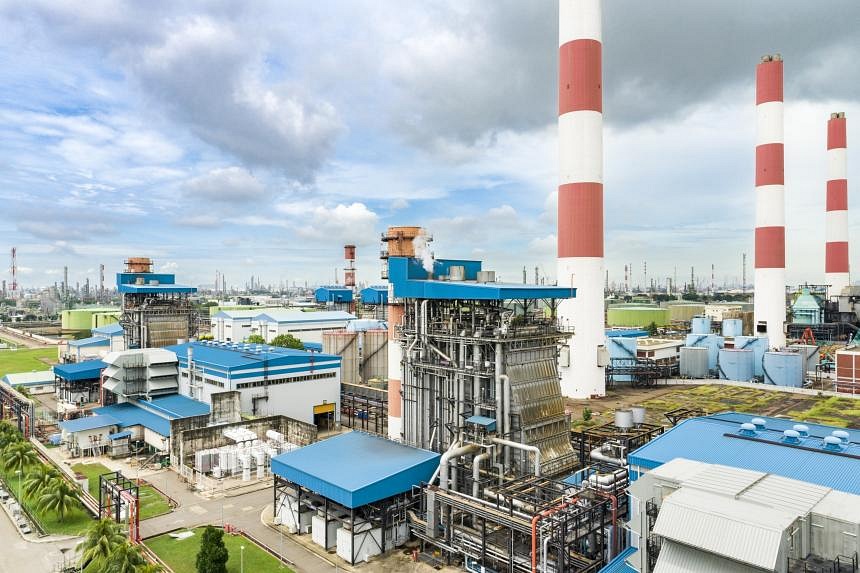SINGAPORE – YTL PowerSeraya (YTLPS) has won the right to build, own and operate a new turbine, which will raise Singapore’s electricity generation capacity by the end of 2027.
The upcoming hydrogen-ready combined cycle gas turbine will have a 600MW capacity and can power about 864,000 four-room flats for a year. It will be an extension to the existing Pulau Seraya Power Station on Jurong Island, and will cost an estimated $800 million to build.
Expected to be commissioned by end-2027, it will initially have the capacity to use up to 30 per cent hydrogen and 70 per cent fossil fuels for electricity generation. It can also be retrofitted to be fully powered by hydrogen in the future.
Hydrogen, when burned, produces no carbon. But producing hydrogen itself can result in varying levels of emissions. For example, extracting hydrogen from coal can emit substantial amounts of carbon, while green hydrogen is produced by splitting water into hydrogen and oxygen using renewable electricity from solar power.
The Energy Market Authority (EMA) had launched a request for proposal in July 2023 to ensure that Singapore has sufficient generation capacity to meet the projected growth in demand and maintain system reliability.
Announcing the award to YTLPS on Jan 29, the regulator said four proposals were received by the close of the request for proposal (RFP) on Oct 31, 2023.
This is the first RFP under EMA’s new Centralised Process framework, which maintains an ongoing 10-year forecast of electricity demand and available generation capacity.
If these forecasts indicate insufficient generation capacity to meet the power system’s demands, EMA will invite the private sector to propose ways to develop and operate new generation capacity.
“This framework guides generation companies (gencos) in making hydrogen-ready and lower-carbon intensity solutions and technologies to contribute to the development of a greener and more resilient power system,” EMA said.
While Singapore electricity generation capacity was about 12,800MW in 2022, the regulator has projected that additional generation capacity will be needed by 2028.
Electricity demand has been steadily increasing due to economic growth, growing electrification and increased digitalisation, EMA said.
And over the next five years, the projected system peak demand – periods when users consume the most amount of energy, usually in the afternoons – will grow faster, with an annual growth of at least 3.4 per cent, compared with the previous decade’s growth of 1.5 per cent.
This acceleration is driven by industries such as advanced manufacturing, digital economy, food and transport, the regulator said.
In particular, electrification will grow as Singapore pushes for its vehicle population to be electrified by 2030.
New diesel car registrations will cease from 2025, and all new car and taxi registrations will have to be of cleaner-energy models, including electric, hybrid or hydrogen fuel cell cars, from 2030.
Industry observers told The Straits Times that green hydrogen is projected to become cost-effective by 2030.
Energy Studies Institute executive director Lee Poh Seng said: “Researchers from institutions like MIT (Massachusetts Institute of Technology) and Harvard have identified system designs and locations for producing industrial-scale green hydrogen through solar-powered electrolysis by 2030.”
The cost of producing green hydrogen will halve by 2030, estimates Mr Kavickumar Muruganathan, who lectures on energy, environment and economics at the National University of Singapore.
“The cost depends on supply, demand and production costs associated with hardware to split the hydrogen and oxygen from water, and the scale up in deployment of these devices.”

